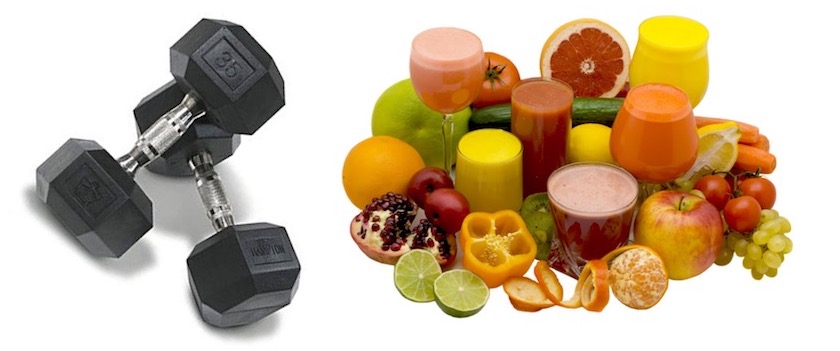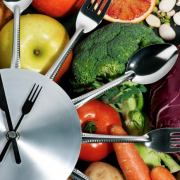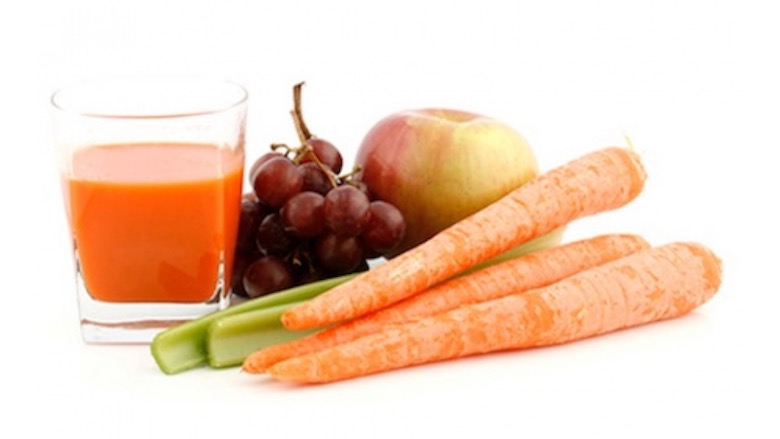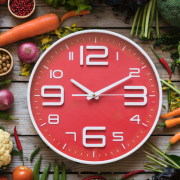Fasting with fresh vegetable and fruit juices is generally an excellent method of detoxing or a suitable way to introduce a comprehensive lifestyle change (diet modification, exercise training or weight loss). What’s cool about juice fasting is that you can reap the many benefits of a rested digestive system without depriving your body of essential micronutrients that promote overall good health.
A while back, I partook in a 21-day juice fast just prior to converting to veganism (I’ve since reintroduced moderate amounts of animal-based foods into my diet).
Leading up to this fast, I’d abandoned a bodybuilding inspired resistance training program and eating plan that involved my consuming large quantities of red meat and other animal-based protein sources and I just felt toxic. Adding insult to injury, once I lessened the intensity of my resistance training program and opted for a more moderate one, I found myself holding on to about 25 extra pounds of unsightly fat.
Now let me be clear, the intention of my going on a 21-day juice fast was not to lose weight. I simply wanted to initiate a physiological “reset” and, in essence, “cleanse” my body after years of consuming meat in excess. I did, however, lose 35 pounds during this fast. But, when I reintroduced solid foods into my diet, I ultimately regained about 10 pounds which I totally expected due to metabolic adaptations.
Interestingly enough, years later I initiated a 7-day juice fast while continuing a 60-90 minute morning routine of intense cardiovascular exercise – Albeit with a twist on Day 1.
I had registered for an indoor cycling certification months prior to my fast and refused to postpone it. As a result, the first six hours of Day 1 were spent in an overly cooled health club – Two hours of which were spent exercising on a spinning bike. Lucky for me, I had 16 ounces of fresh juice in hand which I consumed gradually with a whole lot of water.
Sounds like hell but after completion of this day, I felt invigorated.
I decided to try and maintain my weekly resistance training routine which, at that time, consisted of four days of moderate-to-high-intensity weightlifting. I’ll be the first to admit that I was quite skeptical. In fact, I dreaded the idea of teaching an evening power weightlifting class on Day 2. Nevertheless, I dragged myself to the gym in preparation for a pitiful workout as I had throbbing hunger pangs.
However, something happened to me after I took my class through a third set of squats – I felt more energized than I’ve ever been on a fast and sweated a river as I underwent a full hour of power weightlifting. Most surprising to me was the fact that I was not hungry afterwards. Feeling completely inspired by my body’s physiological response, I decided to continue lifting weights for the duration of the fast.
My energy levels never subsided and the hunger pangs never returned.
I had a good strategy for countering hunger throughout the 7-day period, which essentially involved drinking 16-40 ounces of fresh juice a day in 4-8 ounce servings in order to ‘trick’ my body into satiety. My juice blends varied from leafy green combinations to other antioxidant-rich vegetables like bell peppers, tomato, and carrot. For added flavor, I included fruit juices into my blends like apple, pear, plum, mango, orange, strawberry, and grape.
I have an interesting theory as to what happened to me while engaging in intense exercise during this juice fast.
The typical response to any fast involves a decrease in metabolism, which is the body’s natural way of conserving energy. During this time, fatty acids and amino acids from muscle protein are used as fuel sources. These responses are most dramatic with prolonged fasting (greater than 10 days) but can begin as early as three days after. Such responses can make one feel sluggish and completely de-energized.
It is possible that the dramatic increase in metabolism that occurs during and after weightlifting, and exercise in general, could counter dramatic reductions in metabolism. Furthermore, because the preservation of muscle that occurs with resistance training can inhibit the breakdown of muscle that normally occurs during a fast, the rate of metabolism could very well be maintained.
Related Article: 5 Reasons Why Resistance Training Is Necessary for Weight Loss
This theory might explain why my physiological responses to the juice fast were not typical.
I felt refreshed, invigorated, and energized from the first day of cycling exercise, to the second day of weightlifting, and during all subsequent workout bouts. In addition, I lost nine pounds during the 7-day period, and kept off seven upon consumption of solid foods, which is possible evidence that:
- There was no significant decline in my metabolic rate, and
- The majority of this weight loss was likely fat.
So what?
Well, I’m not telling you to start a juice fast while engaging in a 2-hour daily workout routine for the purpose of weight loss. I’m just letting you know that it is possible to combine intense exercise training with juice fasting and, if you are physically able to do so, this method might be among the best ways to incorporate fasting for weight loss.
Still, I don’t recommend that juice fasting be undertaken for weight loss unless done under supervision from a trained health or healthcare professional. The overall composition of nutrients you take in when fasting is everything and the average person just isn’t properly trained in the art of putting the correct nutrients together.
I’ll close by saying this: If a weight loss program combining juice fasting and exercise training is not a precursor to a comprehensive lifestyle change, and the intention is to binge eat afterwards or use food as a reward to celebrate a weight loss accomplishment, I highly recommend your considering another program.
At the end of the day, if your calorie intake exceeds your calorie expenditure ANYTIME after stopping such a weight loss regimen, weight regain will surely ensue.







